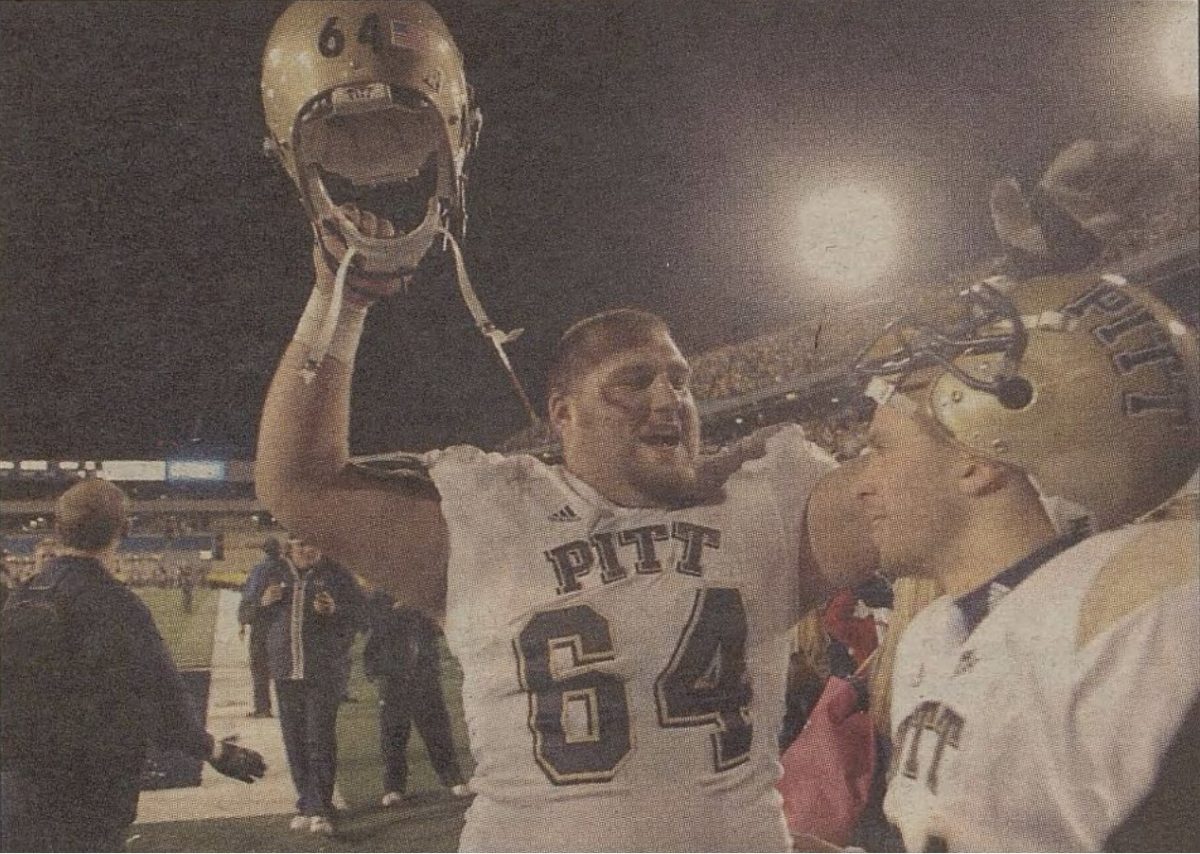One year ago, on a blisteringly hot Thursday evening in September, Pitt and West Virginia’s football teams took the field for a primetime season-opening matchup. But this was not a normal meeting between these two old rivals. Pitt and West Virginia had not met on a football field in nearly 11 years, leaving many to wonder if a new generation of fans would embrace the rivalry.
But over the course of the night, one thing became clear — the Backyard Brawl was alive and well. Over 70,000 Pitt and West Virginia fans poured into Acrisure Stadium, breaking the record for the most attended sporting event in Pittsburgh.
As the players lined up for the opening kickoff, the energy in Acrisure Stadium turned electric. Pitt — who was heavily favored entering the matchup — fell behind early. Meanwhile, West Virginia — emboldened by a strong showing from its fanbase — looked capable of running away with the upset.
With its hopes slowly diminishing, Pitt found its hero in then-junior cornerback M.J. Devonshire. With 3:41 remaining on the clock in a tied ball game, West Virginia looked ready to deliver a dagger and finally overcome the Panthers.
But Devonshire had other plans. Devonshire picked off a pass from former West Virginia quarterback JT Daniels and found himself open with room to run. The junior cornerback ran all the way into the end zone, giving Pitt the game-winning 38-31 lead and forever cementing himself in the history of the rivalry.
Devonshire’s pick six in the 105th edition of the Backyard Brawl is just one story in a legacy of heroes and electric finishes that the rivalry has to offer. Now, as the 106th edition of the Brawl approaches, I think one thing is evident — the Backyard Brawl is the best rivalry in all of sports.
From The Game to El Clásico, one of the things that makes sports great is rivalries. But few rivalries around the globe have as much history and tradition as the Backyard Brawl. For starters, the rivalry first began in 1895, which makes it 128 years old this year. This makes the Backyard Brawl two years older than The Game, six years older than the Red Sox-Yankees rivalry and seven years older than El Clásico.
Of course, the rivalry has changed significantly since it was first played back in 1895. Along the way, some great moments have echoed through the generations and are still remembered today.
Many older West Virginia fans will remember the “Garbage Game” in 1961, when the Mountaineers crushed the Panthers 20-6 after a Pitt player told The Pitt News that West Virginia was “rebuilding with Western Pennsylvania garbage.”
And no Pitt fan will ever forget the 100th edition of the Brawl, as the final score of the game — 13-9 — is still used by Panthers fans to mock their West Virginia counterparts.
The location also plays a major role in the rivalry. It’s not called the Backyard Brawl for nothing, as the two schools are separated by only 80 miles. Not many rivalries can claim the level of closeness that the Backyard Brawl offers.
But what makes the Backyard Brawl truly one of the best rivalries in sports is the fans. No matter what either team’s record is or where they rank in the country, both schools’ fans show up every time they play each other. Even last year, after Pitt and West Virginia took an 11-year break from each other, over 70,000 fans still coalesced in Pittsburgh to renew the much beloved rivalry.
And each fanbase’s shared love of the rivalry isn’t the only thing they have in common. West Virginia and Pittsburgh are both blue-collar, working-class regions that often get overlooked nationally. But the Brawl offers both fanbases a chance to come together, often on prime time, and showcase their sheer hatred for each other.
Sure, Mountaineer fans may sometimes hurl rocks and beer bottles at the Pitt buses and Panther coaches may make fun of West Virginia residents on the radio, but the rivalry does more to unite than divide. At the end of the day, both fanbases share similarities and call the same region of northern Appalachia home.


